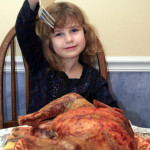I’m back from the Society of Children’s Book Writers and Illustrators Conference in Los Angeles, as usual a terrific conference, and slowly getting over the brain overload–normal– and slightly sprained ankle–not normal–that I acquired during the week..
The good news this year is that everyone from Simon & Schuster Vice-President and Publisher Justine Chanda, who spoke about ‘The State of The State of the Industry,’ to Deborah Halverson, who gave the annual market report, (available to all SCBWI members), to various editors and agents, all agreed that children and teen publishing is in great shape, which cheered conference participants immensely.
Young adult fiction is still going strong, with the exception of dystopian novels, which are generally believed to have passed their peak. (Personally, I never liked them that much to begin with, although some good books have come out of the trend.) Self publishing continues to be more accepted, although those who do it are urged to do it well, with careful attention to editing and book design.
One of the most interesting comments I heard, several times, was the agreement that YA novels are getting a lot of cross-over; that is, that many adults as well as teens are reading them. No wonder, then, that so many YA novels have graced this last year’s best-seller lists. Someone, I forget who, put up a quote from TV comic Stephen Colbert, that said something like: YA novels are regular novels that people actually read!
There were many good keynotes and many, many good workshops–I wish I could have attended twice as many as I did. There was an editors’ panel, one composed of agents, and one with marketing and sales people. Add that to seeing old friends and making new ones, and it was a very productive week. (Have to come clean: I’m on the SCBWI Board and have been a member for over 20 years, so not exactly unprejudiced, here. : )
I think most of us came home with renewed enthusiasm to get back to work. So excuse me while I switch to the WIP.
Cheryl
PS During the Board meeting, the dispute between Amazon and Hachette Book Group was discussed, and a statement will be released about that, soon.





